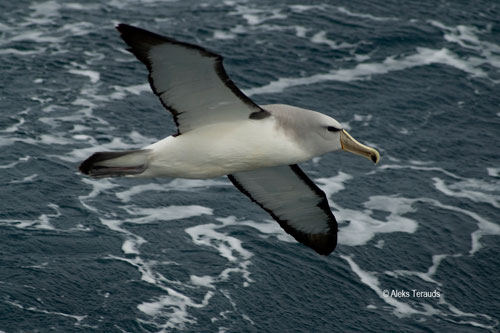Claude Joiris (Laboratory for Polar Ecology, Saint Restitut, France) and Grant Humphries have published in the journal Advances in Polar Science on seabirds at sea in the Southern Ocean, finding concentrations at oceanic fronts. The ACAP-listed Salvin’s Albatross Thalassarche salvini was one of the most abundant recorded out of 22 species at frontal zones.
The paper’s abstract follows:
“This article is part of our long-term study on the quantitative at-sea distribution of the marine “upper trophic levels”—seabirds and marine mammals—in polar ecosystems, aiming at quantifying the factors influencing their distribution as well as detecting possible spatial and temporal changes, with special attention to hydrography and to global climate changes. During an expedition of icebreaking RV Polarstern in February 2010, along the North–South transect between New Zealand and the Ross Gyre, off the Ross Sea, 3200 seabirds belonging to 22 identified pelagic species were recorded during 338 half-hour transect counts. Four major hotspots were identified. These were in Sub-tropical Water off New Zealand (up to 300 birds per count), and at the main Southern Ocean fronts: the Sub-Antarctic Front (up to 240 per count), the Antarctic Front (up to 150 per count) and the Polar Front (up to 200 per count), representing the vast majority of recorded seabirds. The most numerous species in the three frontal zones were: prions—mainly slender-billed Pachyptila belcheri—and Salvin’s albatross Thalassarche [cauta ] salvini. The eight more abundant species represented 2650 birds, i.e. more than 80% of the total. A random forest clustering method identified four groups of seabird species occupying similar oceanographic niches.”

Salvin's Albatross at sea, photograph by Aleks Terauds
Joiris, C.R. & Humphries, G.R.W. 2018. Hotspots of seabirds and marine mammals between New Zealand and the Ross Gyre: importance of hydrographic features. Advances in Polar Science 29: 254-261.
John Cooper, ACAP Information Officer, 03 January 2019

 English
English  Français
Français  Español
Español